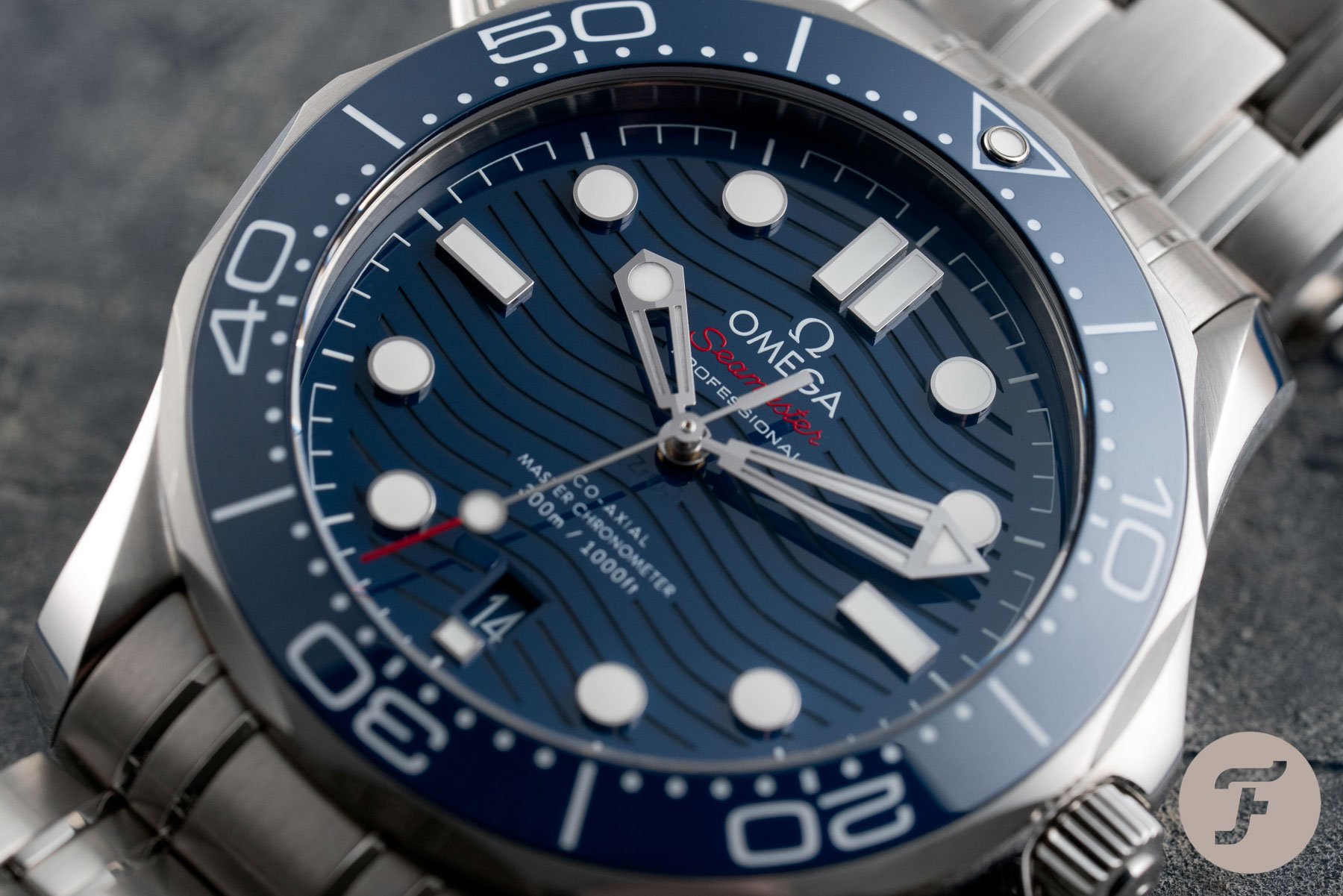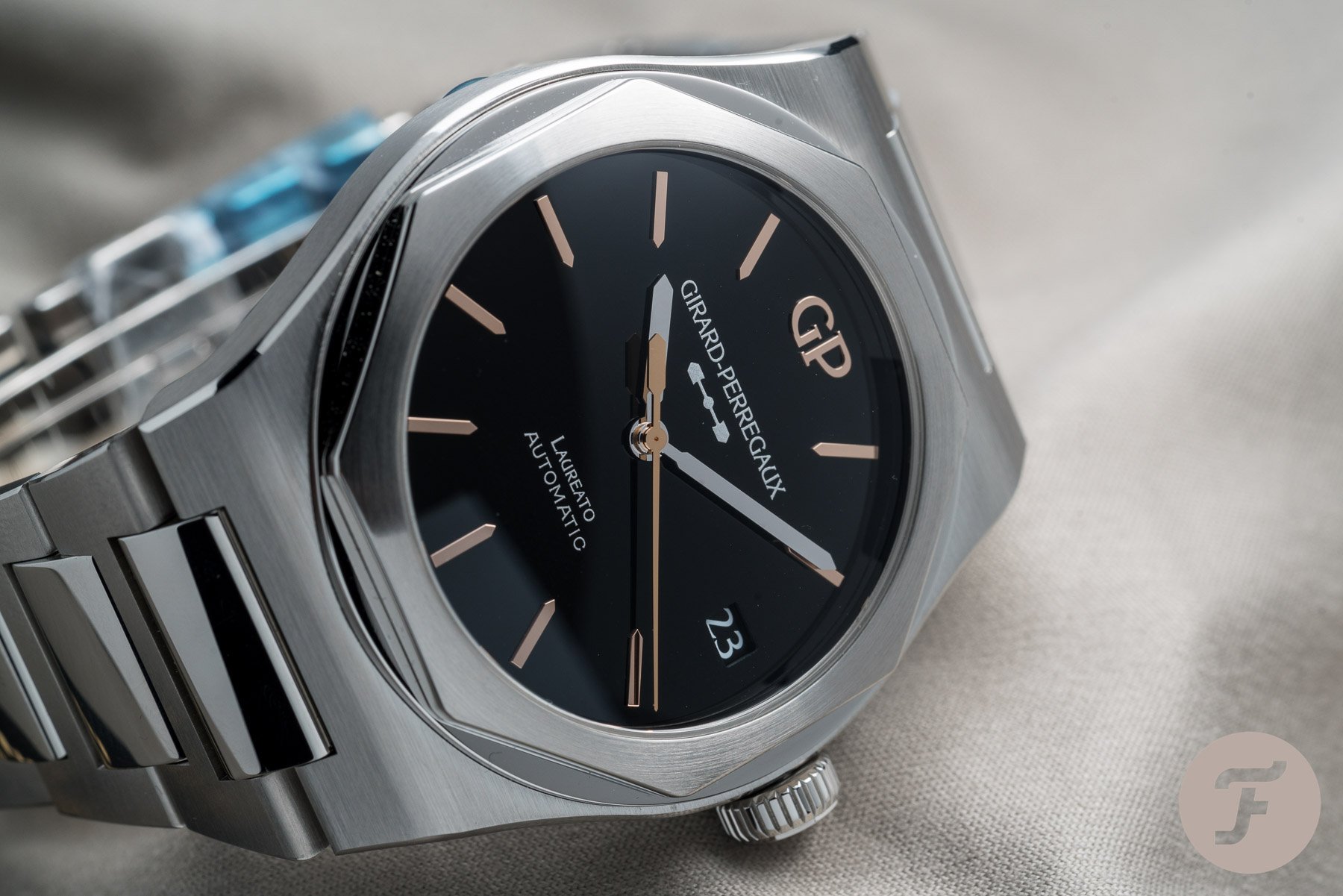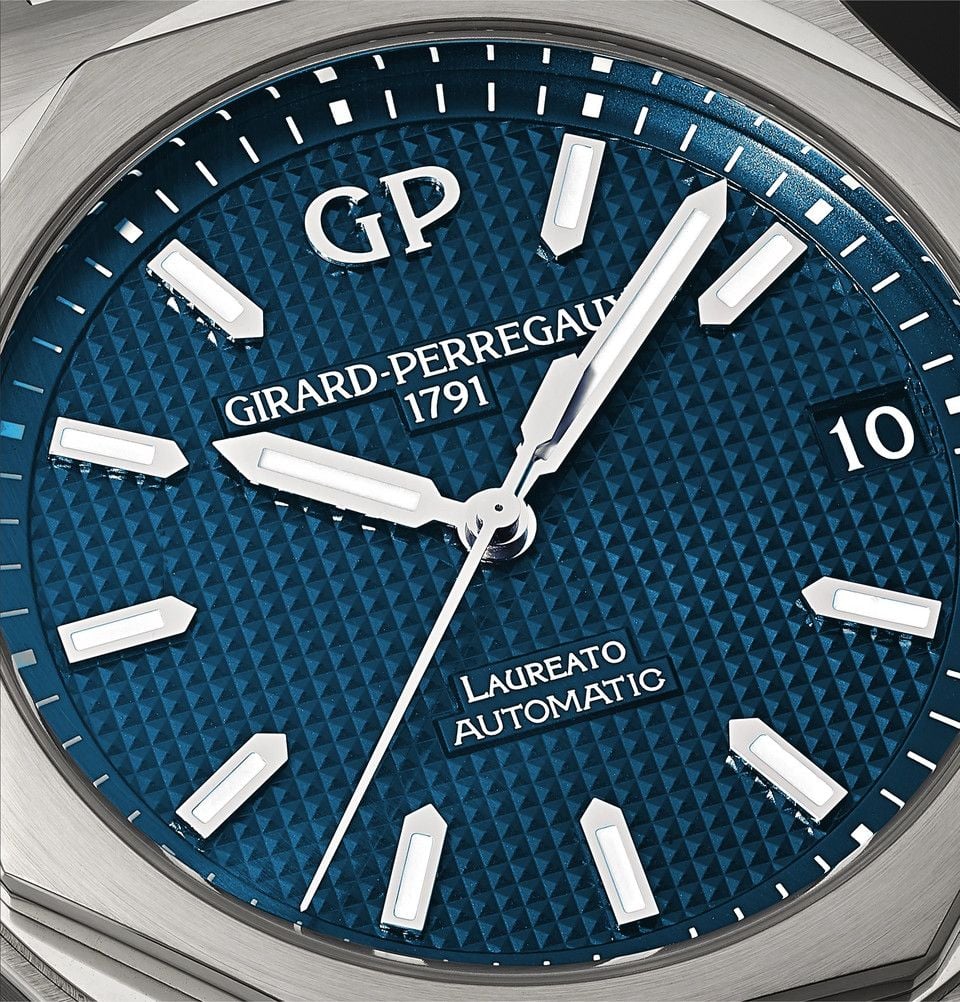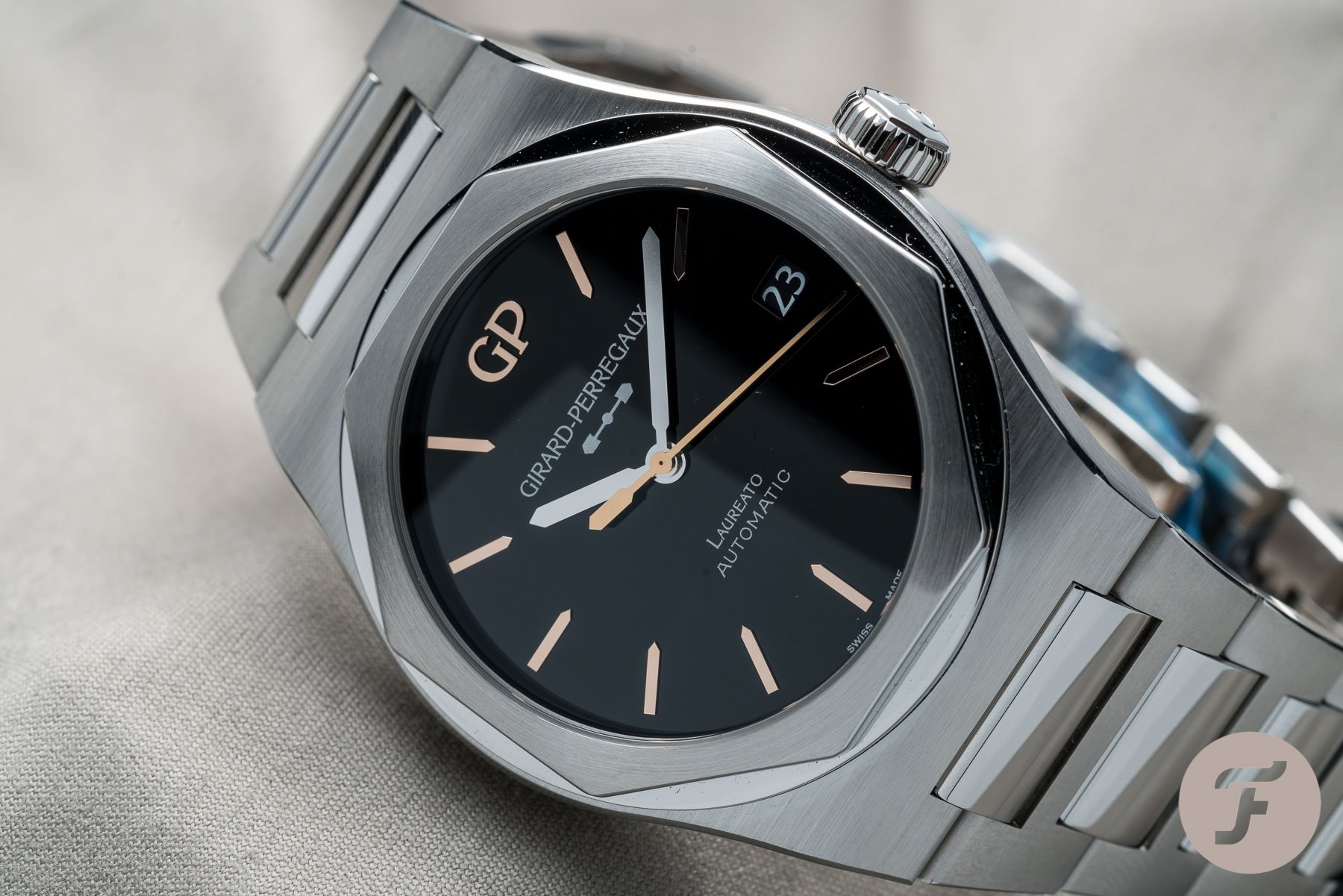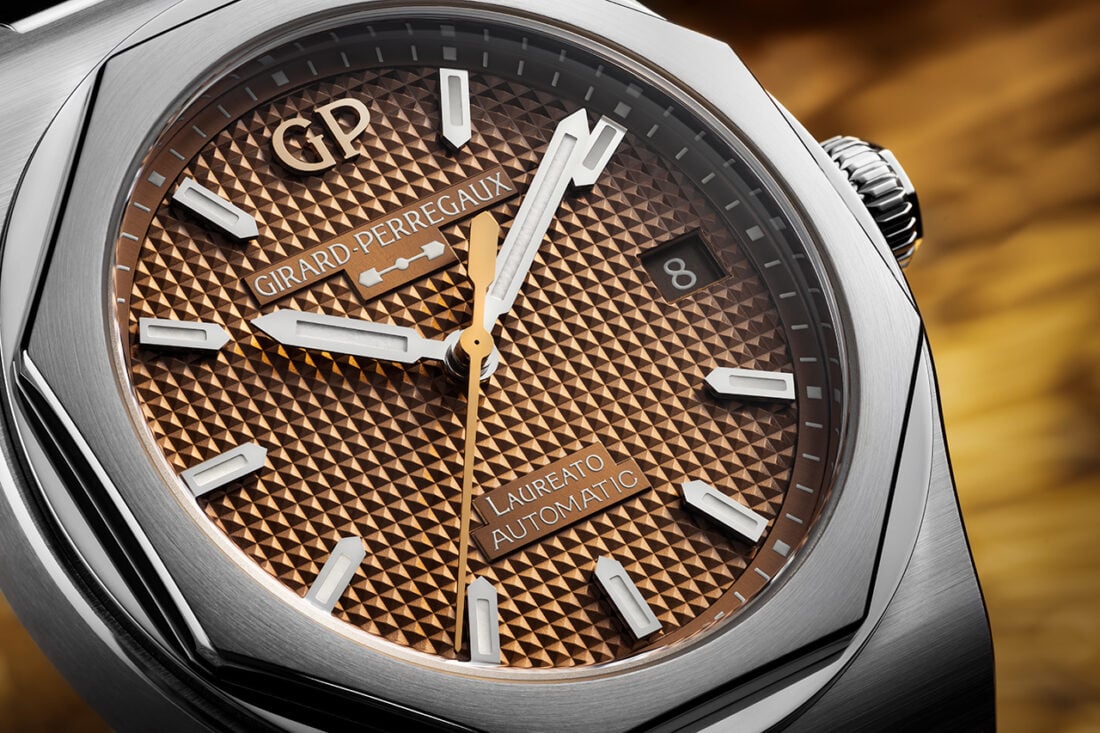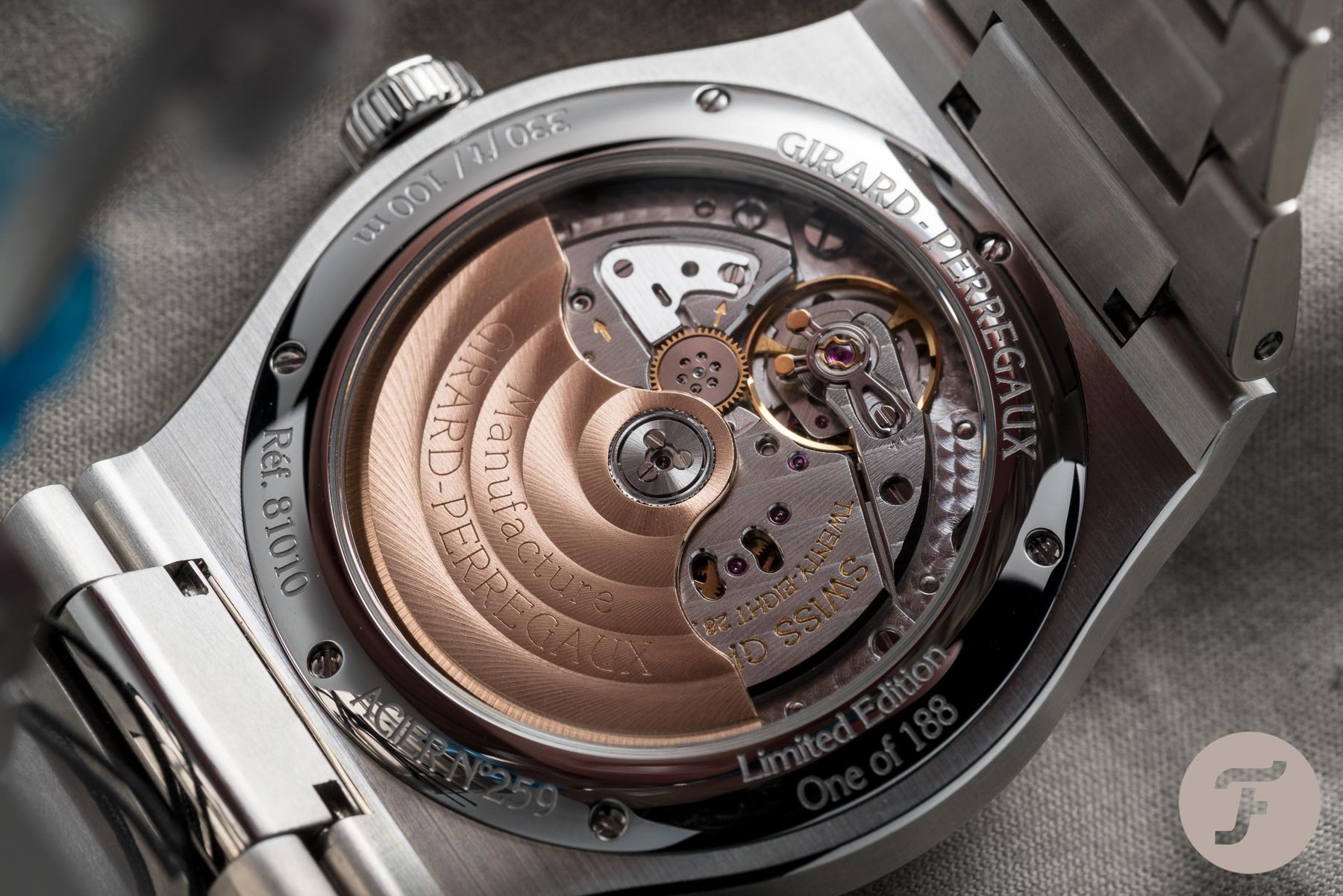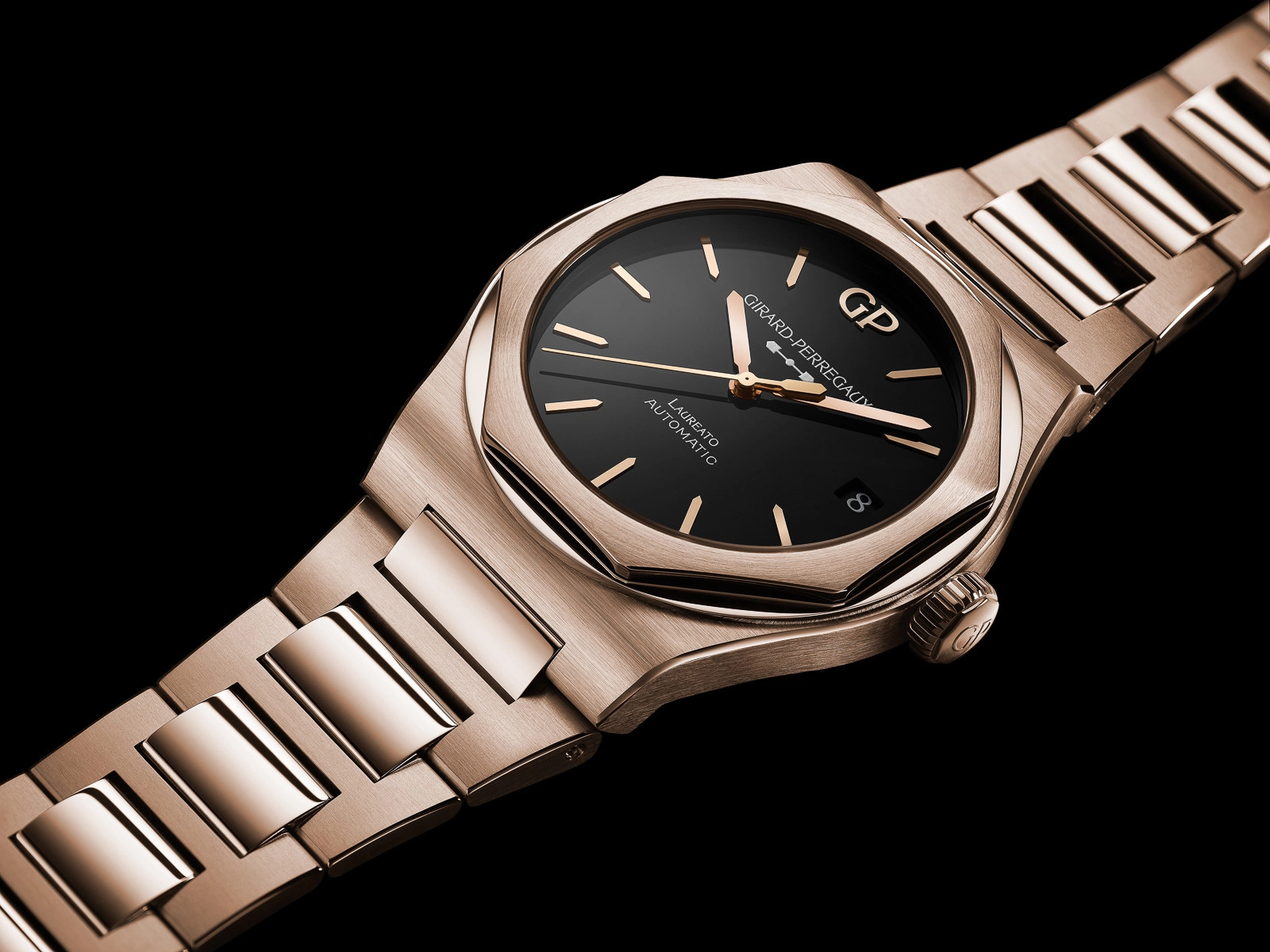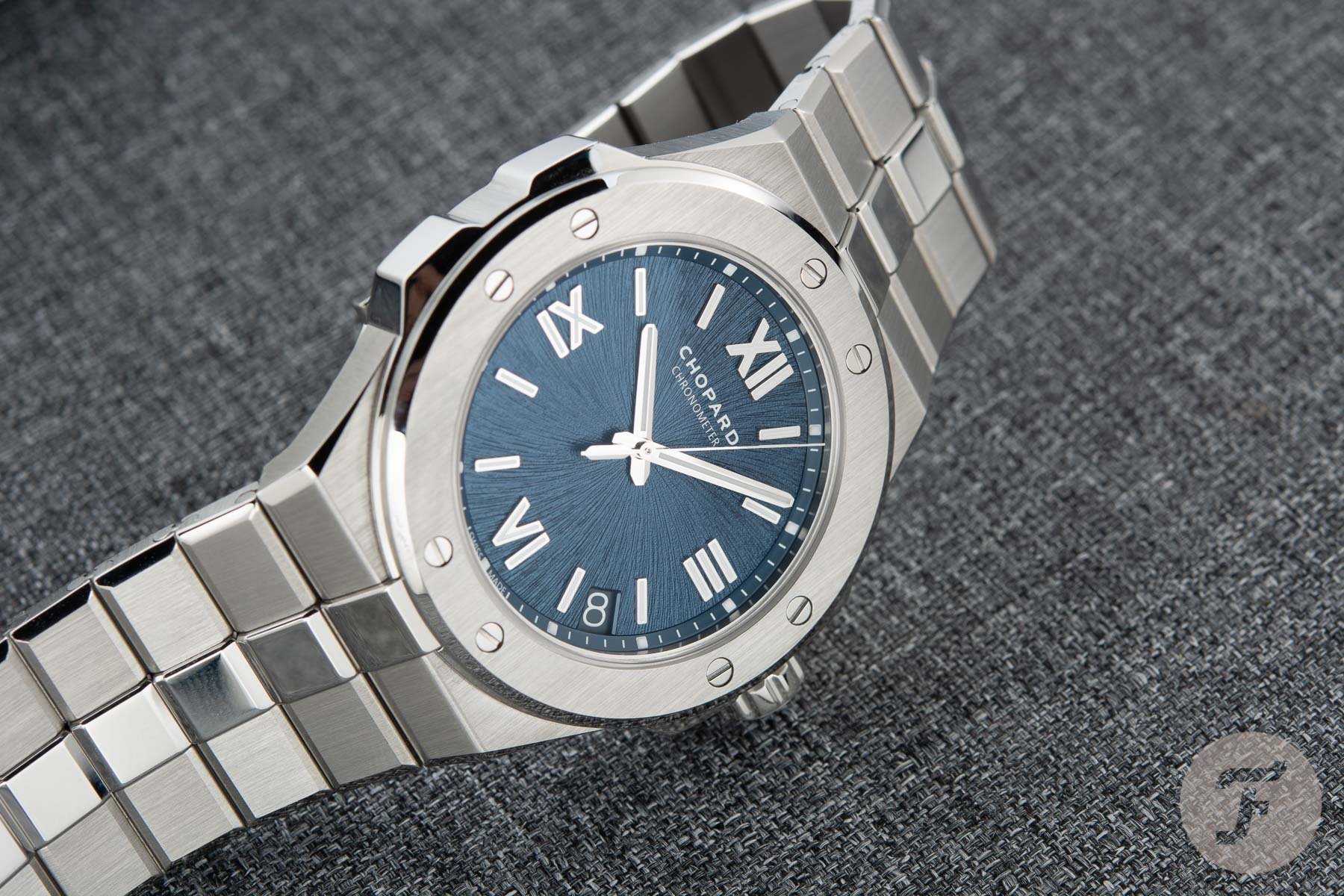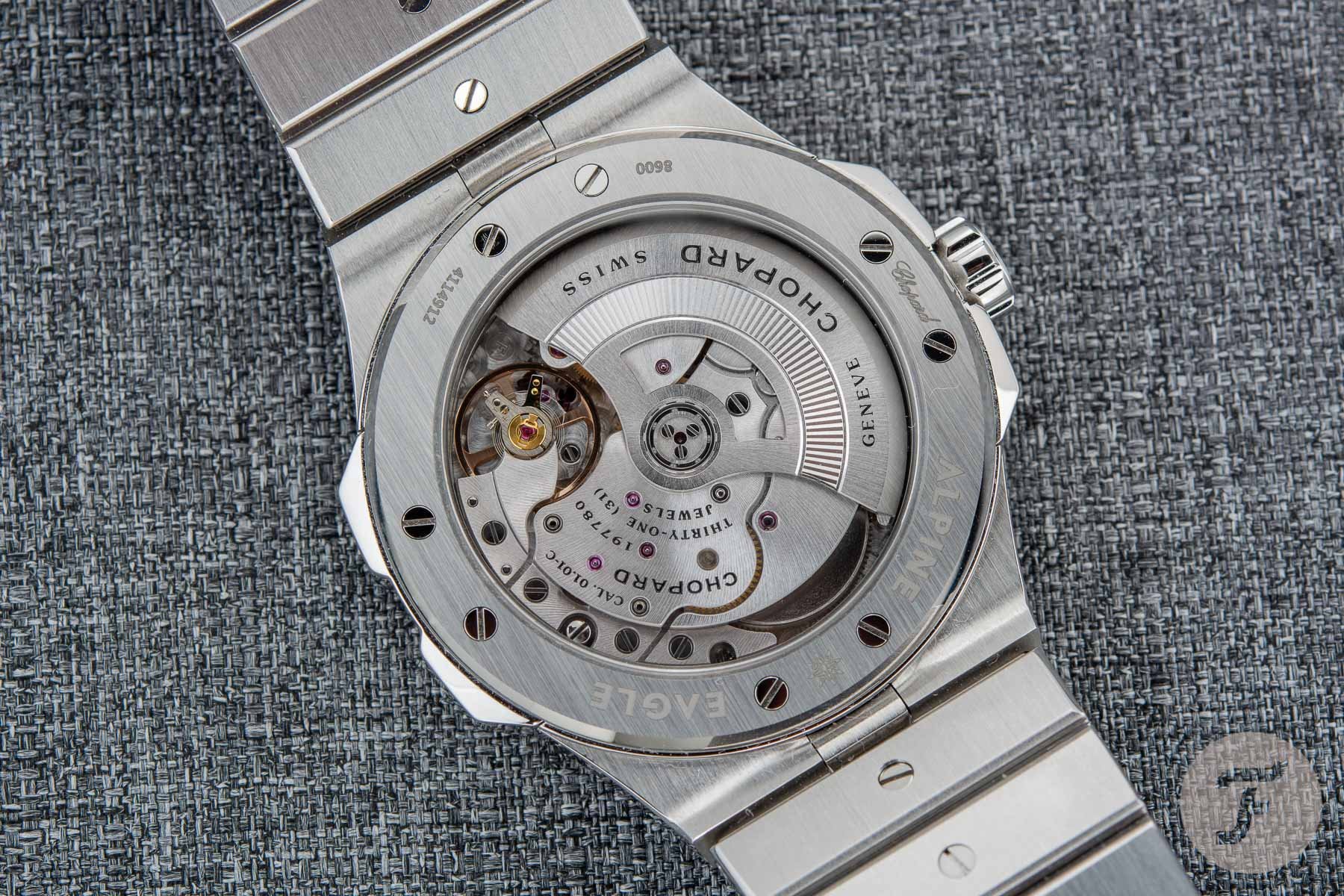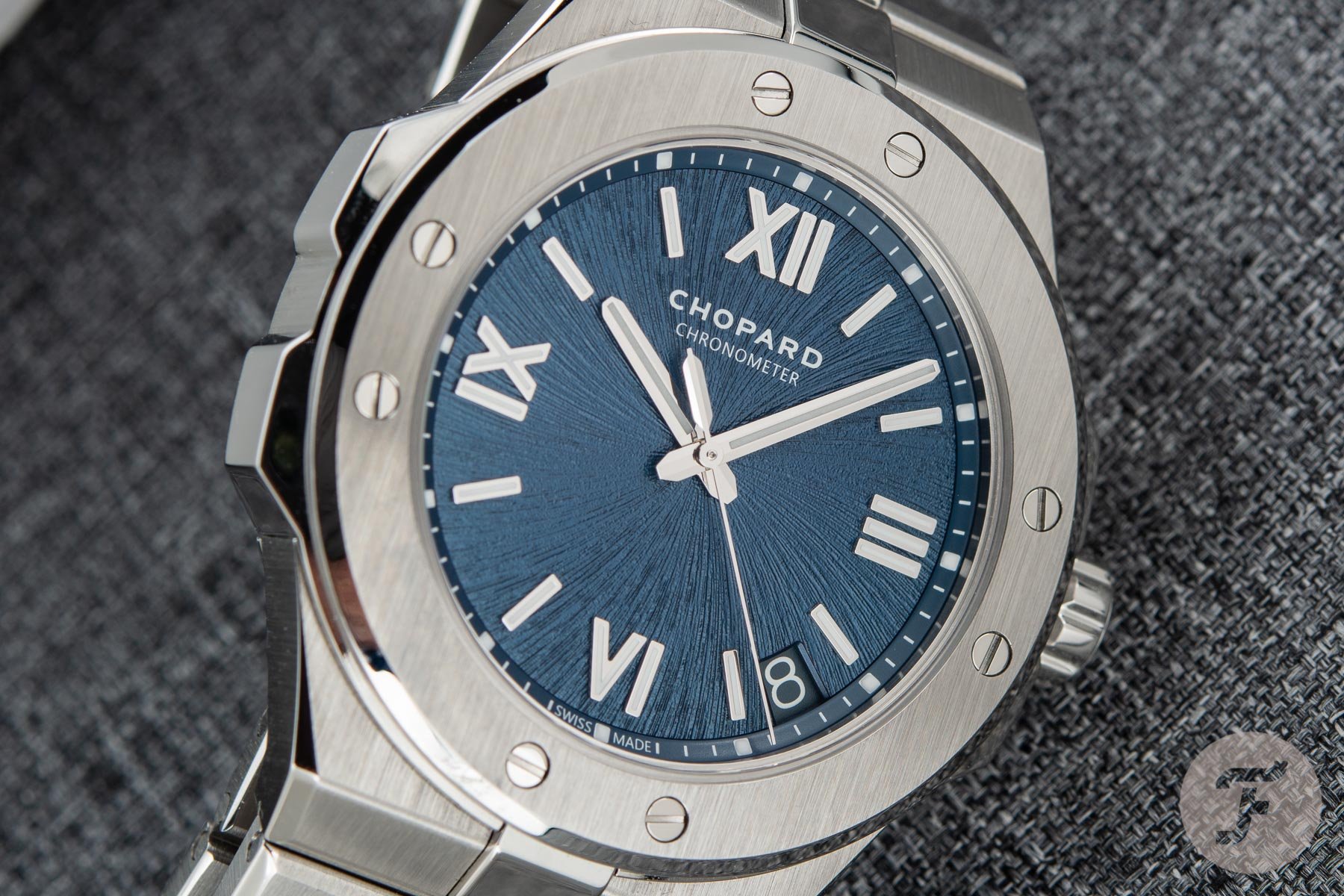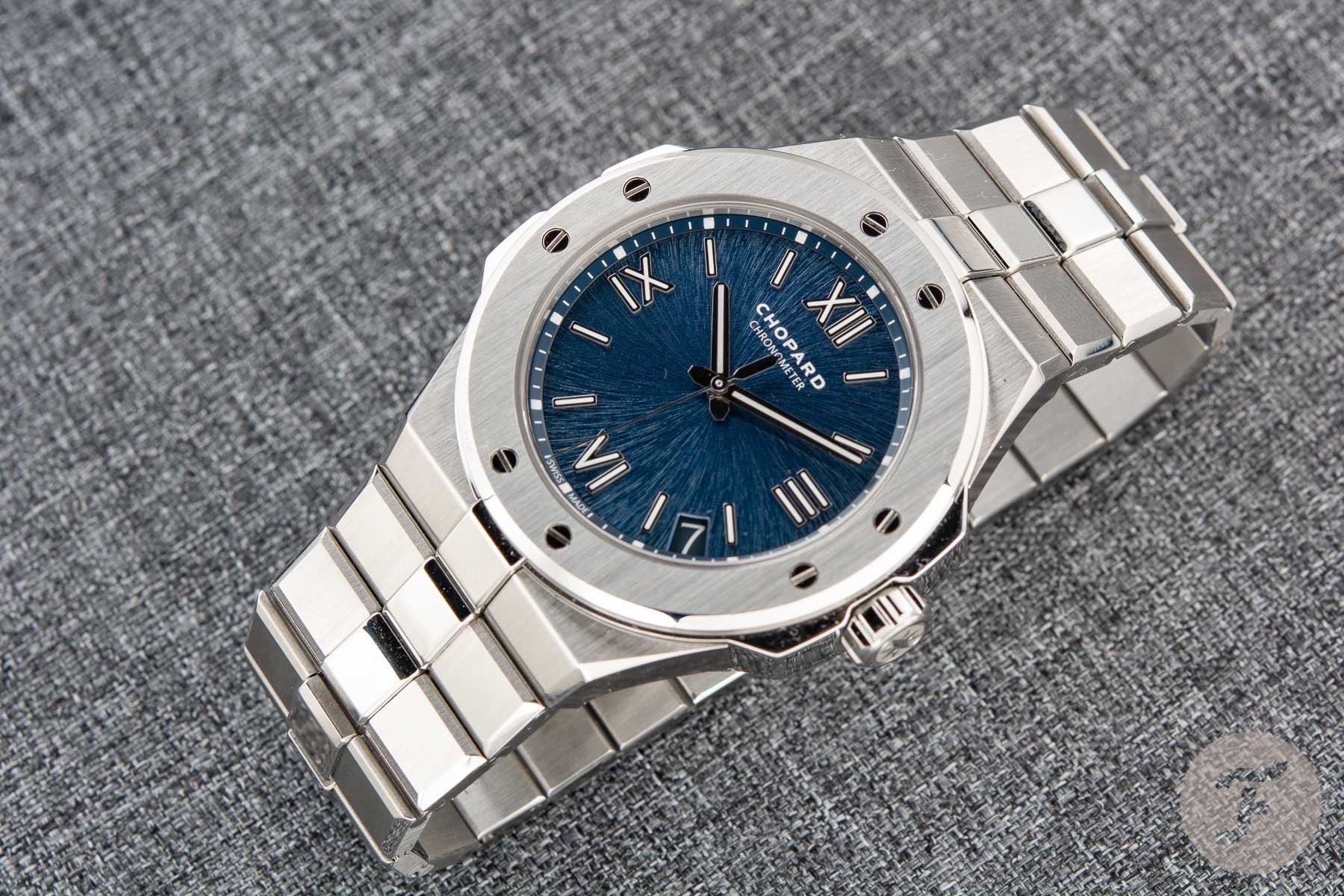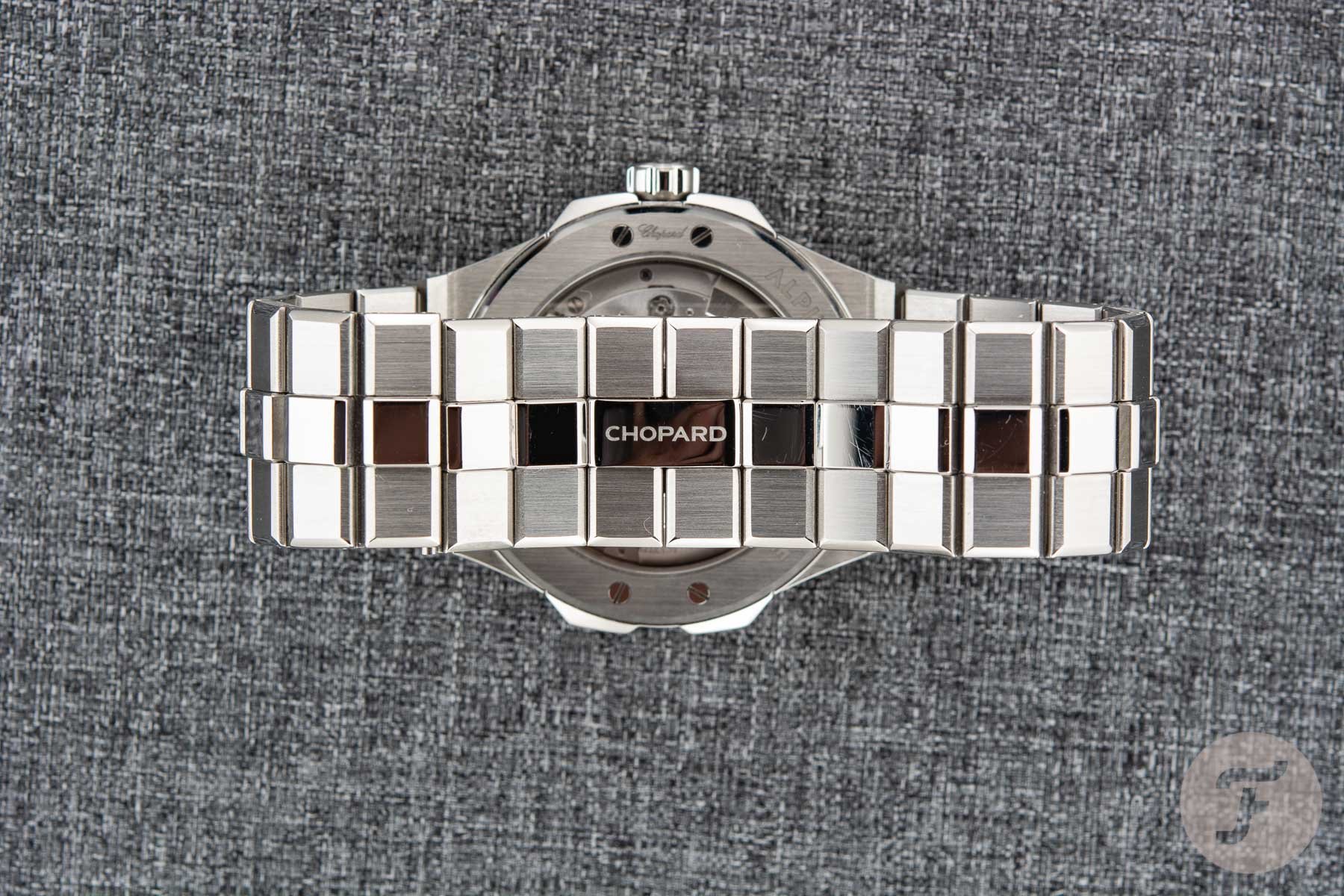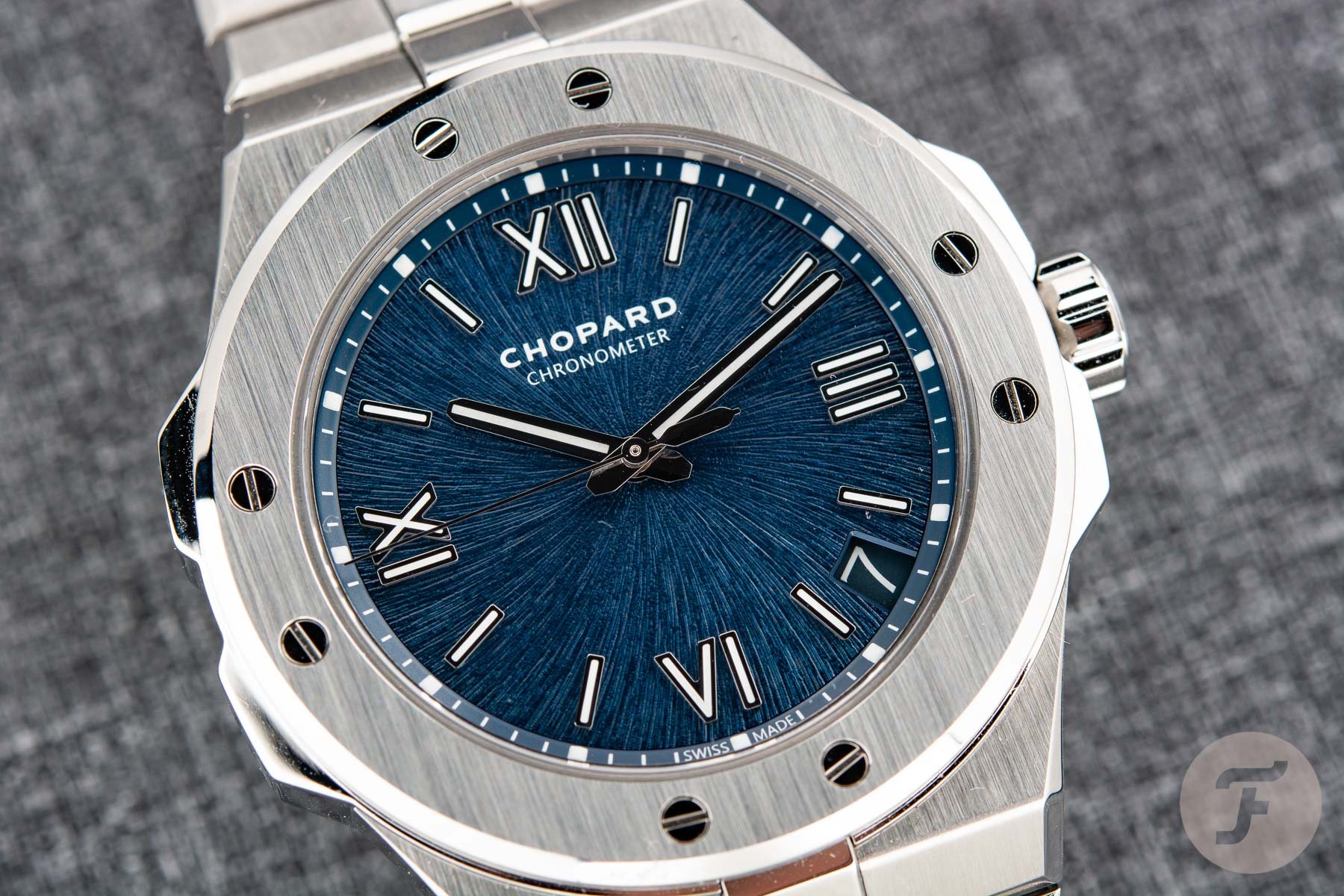Sunday Morning Showdown: Sport Chic — Girard-Perregaux Laureato Vs. Chopard Alpine Eagle
The last few weeks have been a bit dive-watch-centric, so today’s Sunday Morning Showdown will focus on different types of watches for a palette cleanser. This week Ben and Jorg pick a fight between two modern sports watches with integrated bracelets. But these watches are not part of the holy trinity of Grandes Maisons. Instead, this week’s battle pits the less hyped models in that category against each other. Our contenders are the Girard-Perregaux Laureato, introduced in 1975, and the Chopard St. Moritz from 1980. The modern iterations lean heavily on the classic designs but contemporize them for today’s audience. In the case of the Chopard, even the name evolves to the Alpine Eagle. Whether you’re a fan of the watches or not, it’s worth reading before casting your ballot. You never know; you might gain some appreciation for them.
Discussing modern sports watches with integrated bracelets often involves the mention of Gérald Genta’s design ethos that birthed the Audemars Piguet Royal Oak. Now that we’ve mentioned it, we promise to leave it there. Not that his legacy is not worth discussing, and 50 years later, it is still as relevant as ever. But as many brands create a spin on the sport-luxe watch, such as Bvlgari, Czapek, and H. Moser & Cie., there are plenty of options outside the trifecta perfecta. Even at the entry level, you have options like the Tissot PRX, Fréderique Constant Highlife, and Yema Wristmaster Traveller. Our choices today at least have roots in the heyday of mid-’70s/early ’80s integrated designs. And given the longevity of both, they stand apart from the wannabes.
Who won? The Seamaster or the Seamaster?
But before we go deep on the Laureato and Alpine Eagle, let’s look back at last week’s showdown. Nacho and Jorg dove in with a generational dual between Omega Seamasters. As it stands, Jorg takes the win with the contemporary Omega Seamaster Diver 300M Co-Axial Master Chronometer ref. 210.30.42.20.03.001. With 54% of the votes, the fight was fierce, with Nacho’s Omega Seamaster Professional 300M ref. 2531.80.00 only losing by a slender margin. While there was plenty of support for the older Seamaster in the comments, the modern Seamaster is superior in materials and manufacturing. With last week wrapped up, let’s turn our attention to the offerings from Girard-Perregaux and Chopard, with Jorg first up repping GP.
Jorg: Girard-Perregaux Laureato 42 mm
Girard-Perregaux’s Laureato was introduced in 1975. Those of you keeping score might recognize that was before the Patek Philippe Nautilus and IWC Ingenieur “Jumbos” of 1976. Even with the stiff competition, the Laureato was a style statement. The slim, two-tone quartz chronometer sports watch from La Chaux-de-Fonds struck a chord with connoisseurs. Its satin-brushed case, polished octagonal bezel, and integrated bracelet showed the concept was here to stay. Over time, the Laureato saw different iterations, with the current generation coming to life in 2016. I will be upfront with you, Ben; I wasn’t immediately taken with the new Laureato.
While Girard-Perregaux’s case design is pretty spot-on, the Clous de Paris dial pattern is a bit too similar to the Royal Oak, in my view. In addition, the dial text sits like a plaque on top rather than integrating with the motif. Also, the typography is too “courtroom” for my liking. All in all, there were quite a few elements that kept me from lusting for the Laureato. Still, its history piqued my interest, especially with the tremendous prestige of sport-luxe watches nowadays.
The Laureato had to grow on me
My tune changed with the launch of the Laureato Infinity Edition in 2020 — all the puzzle pieces finally fell into place. On the face of it, my shift of opinion only came down to a dial change, yet it made all the difference. The glossy black onyx dial creates space and an unending depth, allowing other details to sing. The “Infinity” name also stems from that dial’s optical illusion. Combined with the pink gold applied hour markers and seconds hand, the steel hour and minute hands make for a great look. The transformative design makes this Laureato the contemporary interpretation of the ’70s original.
You may think the Infinity is the only Laureato for me. However, I see it as the model that unlocked my appreciation for the Laureato. Last year’s 38mm Laureato Copper has the hobnail pattern that I ignored before, but now it sits in my top three Girard-Perregaux models thanks to its luscious color and design. Whether the Infinity edition, 42mm pink gold and onyx version, or standard Laureato, the watch is slim and super comfortable on the wrist. The 42mm case is only 10.68mm thick but is 100m water resistant. Both the case and the bracelet feature a mix of brushed and polished finishes that accentuate the watch’s design.
Caliber GP01800
Inside the Laureato, Girard-Perregaux uses its automatic in-house caliber GP01800, which is visible through the display case back. While the standard 42mm Laureato bears a “standard” oscillating rotor, many other editions feature a pink gold one instead. Regardless of the material, it is decorated with circular Côtes de Genève for extra refinement. The thin movement is a joy to see with perlage on the base plate and vertical Côtes de Genève on the bridges. The caliber comprises 191 parts, operates at 28,800vph, and delivers 54 hours of power reserve. It’s a slim, modern-day mechanism that fits the Laureato perfectly.
The strength of the watch is my journey of discovery. At a list price of €15,100 for the regular 42mm model, it has relatively good value when placed against its counterparts. But I would still chase that Infinity edition due to its opinion-changing nature. Despite all this, Ben thinks the Chopard Alpine Eagle is the better pick.
Ben: Chopard Alpine Eagle 41
The story of the Chopard Alpine Eagle begins in 1980. Unlike the Laureato, the Alpine Eagle does not retain its original name. Chopard instead revives a classic design from its back catalog in the form of its 1980 St. Moritz, but now refers to the new watch as the Alpine Eagle. The name change is a bit of a shame as I quite like the St. Moritz name. The mere mention of the Swiss ski resort conjures an image of active and sophisticated Alpine gentry. Unfortunately, the rights to the term “St. Moritz” fell out of Chopard’s domain, which explains the alteration. Despite the loss of lineage, the tale of how each model came to be is a mirror image. When current Chopard President Karl-Friedrich Scheufele was 22, he convinced his father to create a two-tone watch to reflect the chic Alpine lifestyle.
Nearly 40 years later in 2019, Scheufele’s son Karl-Fritz had to convince him to reintroduce the original concept for the 21st century. It’s a serendipitous tale that showcases the dynamic of a family-run brand. The most obvious link between the models is the distinctive flat bezel with eight visible screws grouped in pairs at each quarter. The integrated bracelet also has three noticeable sectors per link, which in the Alpine Eagle are pronounced from the rest of the bracelet — more on that shortly. While the original was quartz, similar to the Laureato, the Alpine Eagle now uses a mechanical movement. The comparable specs make this fight even more challenging between the Alpine Eagle and the Laureato. Chopard’s COSC-certified chronometer-grade 01.01-C caliber oscillates at a frequency of 28,800vph, houses 207 components, and provides 60 hours of power reserve — six more than the Laureato.
Where eagles dare
The original St. Moritz reflects the hedonistic lifestyle of the 1980s, but the Alpine Eagle introduces an ecological element. Eagles are beautiful, but certain species are endangered due to habitat loss and persecution. Chopard’s Alpine Eagle led to the creation of the Alpine Eagle Foundation, which, among other conservatory missions, aims to reintroduce various eagle species to their natural habitat in the Alps. The watch also takes inspiration from the physiology of eagles. An example is the spiral-brushed pattern of the dial that resembles the iris of an eagle’s eye. Eagles are known to have the sharpest distance vision in nature, which is wonderfully represented in the Alpine Eagle. The counterbalance of the seconds hand also parallels an eagle’s feather. I was fortunate to undertake some falconry with a steppe eagle, and the might of their talons and precision flying is a sight to behold.
The Chopard Alpine Eagle echoes this strength using Lucent Steel A223 from its Austrian partner, Voestalping Böhler. This durable steel is 50% harder than 316L steel and has a brighter appearance, or “ethereal incandescence,” as Chopard claims. All top surface elements, from the bezel to the bracelet, are brushed apart from the central links. I say “links,” but these polished components are caps that are screwed in from the underside of the bracelet. When removing links for sizing, the caps fall off, which, admittedly, is a bit of a shame for this level of luxury. Even my Breitling Chronomat’s Rouleaux bracelet uses every component as part of the integral construction. The brushed finish continues on the edges and inside the bracelet, with polished bevelling on the angles.
Clash of claws
Where Jorg labored over the Laureato for nearly five years before the design clicked for him, the Alpine Eagle earned my appreciation from the first iteration. I agree with Jorg that the first revival of the Laureato for Girard-Perregaux’s 225th anniversary in 2016 needed evolution. The 2017 Laureato removed the mirror finish from the octagonal bezel to just the surrounding outer ring, which was an improvement. But Chopard’s first attempt nailed it to the point that the Alpine Eagle didn’t need a sophomore-year modification. While I lament how the central links affix to the bracelet, it’s still a great look once sized. And it’s distinctive enough not to be mistaken for the aforementioned Royal Oak. Like the Laureato, the Alpine Eagle has a 100m water resistance rating but remains svelte at 9.7mm, which is thinner than the Laureato’s 10.68mm case profile.
Even the ornate Roman numerals on the dial work for me, primarily thanks to the sans-serif execution, nod to the St. Moritz’s ’80s roots, and the positioning with the dual screws. The diagonal date between 4 and 5 o’clock is a little out of place, and I could’ve done without it. But at least the blue date disc matches the dial and doesn’t disrupt the flow of the Roman numerals. With an integrated butterfly clasp adorned with the Chopard logo, the Alpine Eagle is a snug, attractive sports watch for €14,600. As the price sits slightly under Jorg’s Laureato, I’m honestly not sure why you would opt for anything but the Alpine Eagle. But let’s find out in the poll and comments below!

